APSU students experience Native American culture through New Mexico study away program
By: Ethan Steinquest July 2, 2025
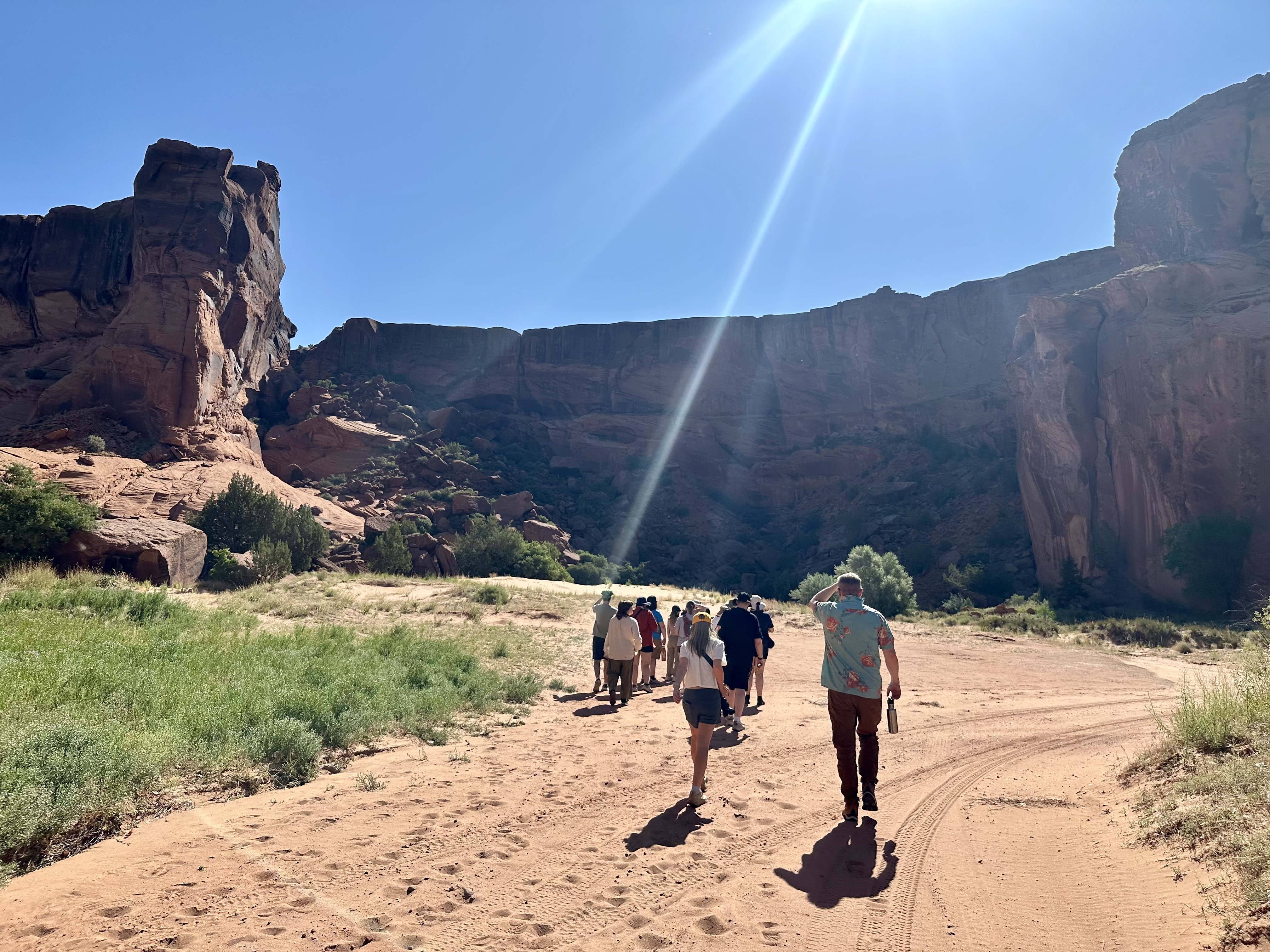
Austin Peay State University students and faculty tour the Canyon de Chelly National Monument in the Navajo Nation. The study away program was supported by funding from the Office of Institutional Culture, and a Student Academic Success Initiative (SASI) grant paid for a Canyon de Chelly Jeep Tour. | Contributed photo
CLARKSVILLE, Tenn. - From the ancient cliff dwellings at Bandelier National Monument to the windswept peaks of Acoma Pueblo, Austin Peay State University students traveled roughly 1,800 miles through New Mexico this summer to engage with Native American communities during one of the institution’s first study away programs.
Dr. Tamara Smithers, professor of art history, and Dr. Wes Atkinson, professor of English, brought 14 students from their Native American art and literature classes on the journey. Participants connected with Indigenous artists, writers, and more while exploring significant cultural sites across the state.
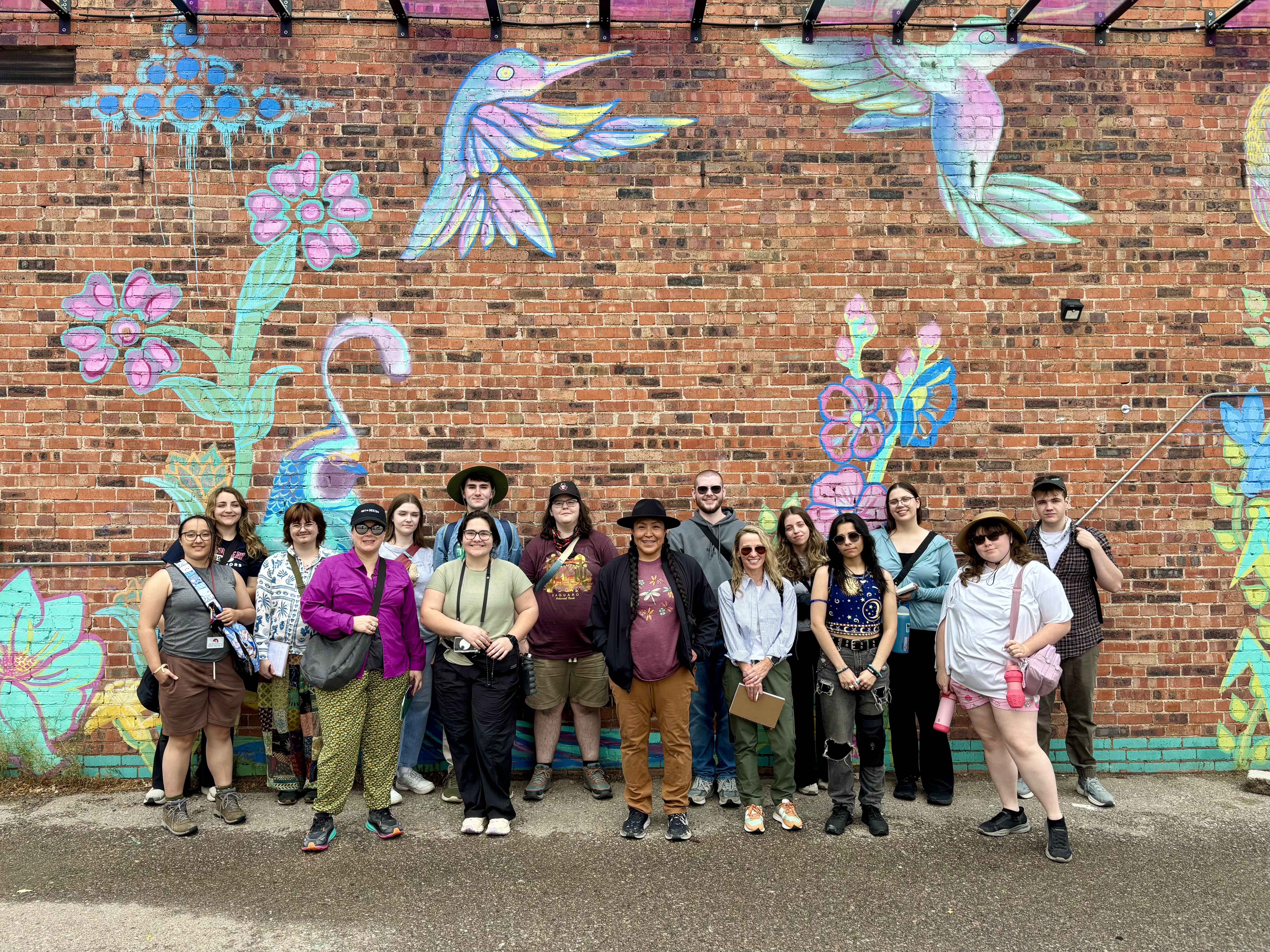
Lynnette Haozous (Chiricahua Apache/San Carlos Apache Tribe/Diné/Taos Pueblo), a New Mexico-based painter and muralist, with Austin Peay State University students and faculty in front of one of her works. | Contributed photo
“I wasn’t expecting this program to impact me so deeply on an emotional level,” said Naomi Hundt, a senior art history major. “Even though we had just met, many [people] treated us like family. They didn’t just share facts about their culture, but they opened their hearts to us and shared their stories with honesty and vulnerability … it made each conversation extremely meaningful to me.”
As part of their immersive learning experience, students met with prominent Native American creatives whose work they had studied throughout the semester. Guest speakers included painters Lynnette Haozous (Chiricahua Apache/San Carlos Apache Tribe/Diné/Taos Pueblo) and Ryan Singer (Diné), along with author Brendan Shay Basham (Diné).
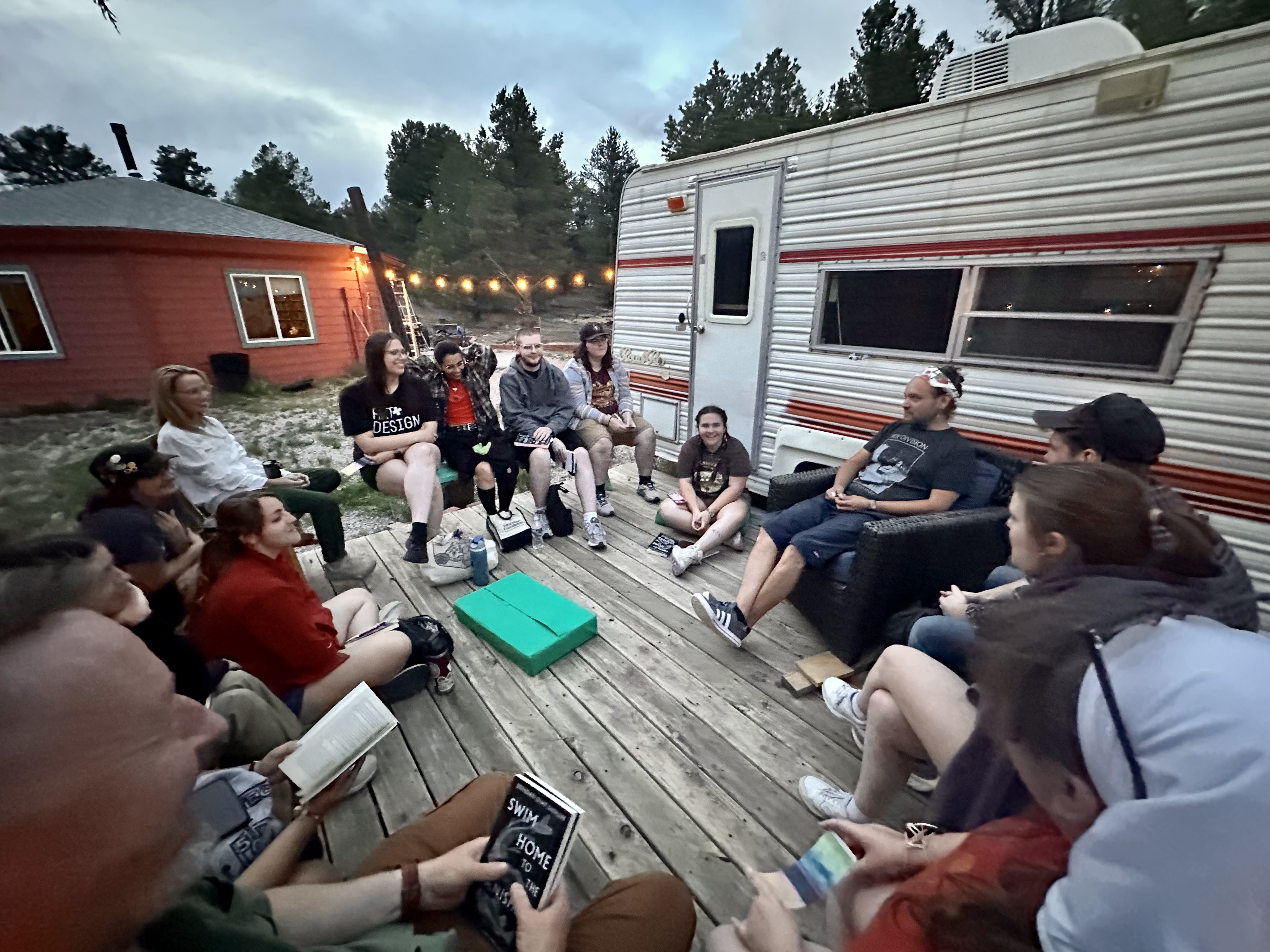
Brendan Shay Basham (Diné), a Native American author and former professor at Austin Peay State University, meets with students and faculty at his family’s ranch in Ramah, New Mexico. | Contributed photo
“My favorite moment of the trip was at Brendan Shay Basham’s house,” said Florence Isbill, a senior animation and visual effects major. “He cooked pizzas with us, welcomed us into his home, and introduced us to his family. When it got cold during a discussion of his book Swim Home to the Vanished, he gave me his jacket. He even gifted signed copies of the book to those of us who didn’t already have one. I was truly blown away by his generosity.”
In addition to making personal connections with artists and writers, students gained insights into the creative practices and cultural narratives that inspire their projects.

Ryan Singer (Diné), a Native American painter, invites Austin Peay State University students and faculty into his studio. | Contributed photo
“Learning from the many different Native artists we met and listening to their stories was the greatest highlight and blessing of the trip,” said Aba Allerup, a senior art history major. “Artists like Ryan Singer and Lynnette Haozous spoke to us not only about their artwork and their processes, but critical issues that affect Native communities and how they are taking steps to help through their work. As an artist, I could not have asked for better experiences.”
Students also deepened their understanding of how sacred places have influenced Native American art, culture, and identity.
“Place is extremely important in Native American culture, so it’s essential for our students to be able to go to the places where these Native American artists and writers live and work,” Atkinson said. “We wanted to make sure we visited Native sovereign spaces, like sovereign Pueblos and the Navajo Nation.”
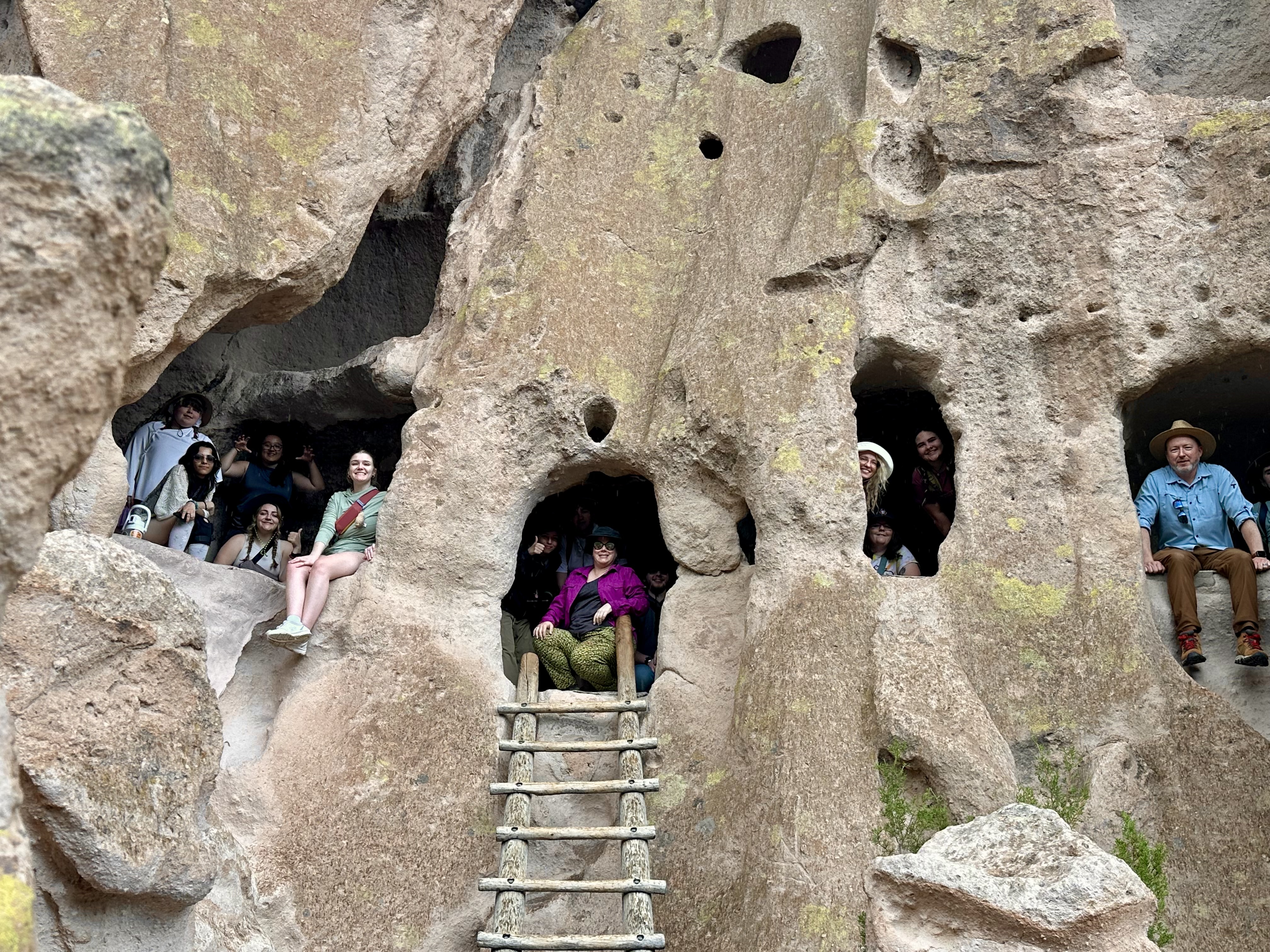
Austin Peay State University students and faculty visit Bandelier National Monument, which protects and preserves thousands of acres of Native American land - including Ancestral Pueblo cliff dwellings. | Contributed photo
One of the most impactful experiences was the group’s first day at Acoma Pueblo, a lofty mesa that Native Americans have inhabited for thousands of years.
“We were in this incredibly sacred space where ancestors had been buried,” Smithers said. “Native Americans experienced a lot of hardships after colonization, and a lot of resilience had manifested. It was very beautiful and dark in the missionary church, and it felt sacred going there.”
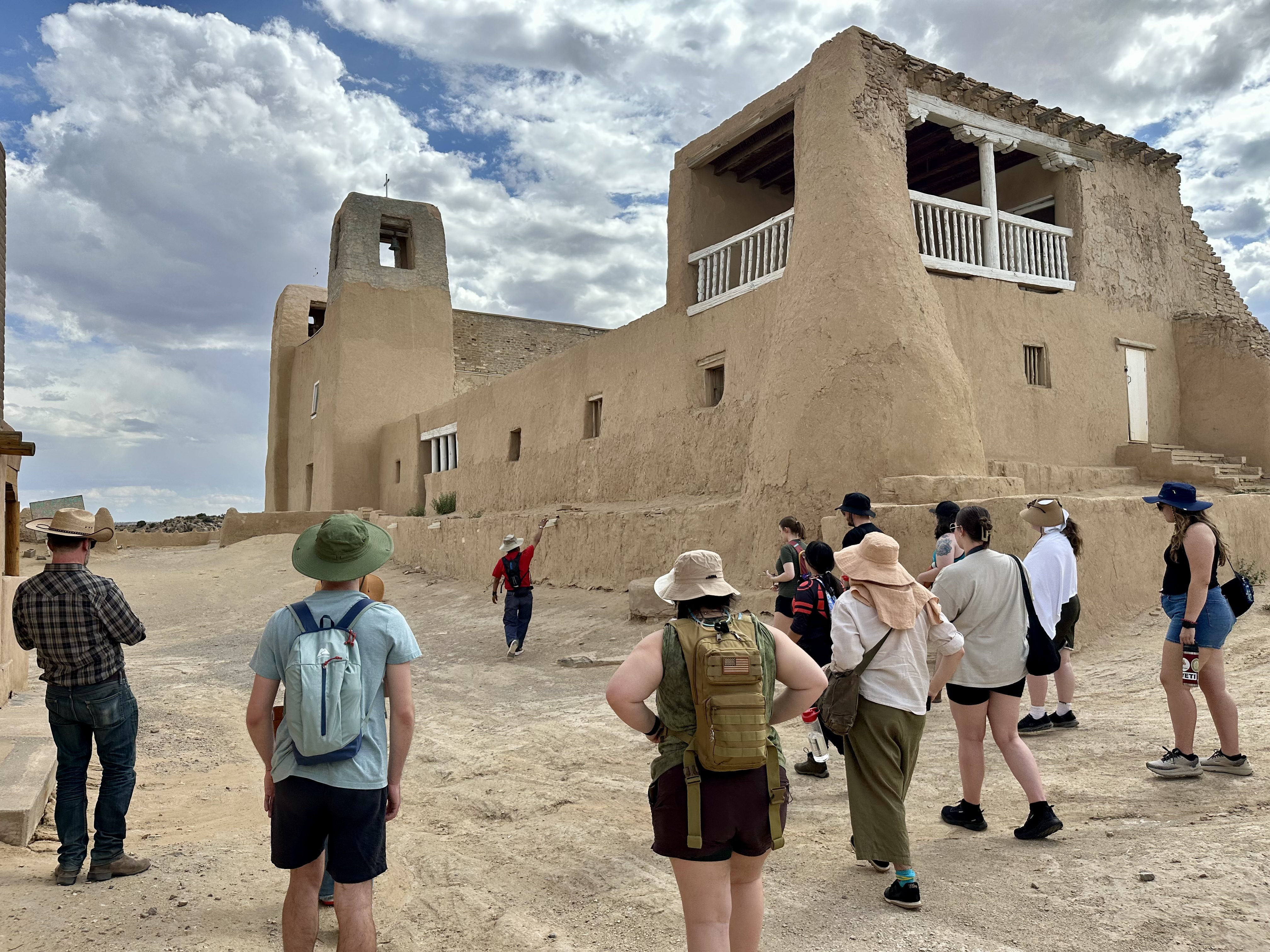
Barnett “Gooby” Garcia leads a group of Austin Peay State University students and faculty on a tour of Acoma Pueblo. | Contributed photo
The group’s tour guide, Barnett “Gooby” Garcia, described the community’s significance before playing a traditional flute song in memory of his recently deceased mother.
“Many of us and our students have had recent losses, and a lot of the people we spoke to talked about how the earth is our mother and the sky is our father,” Smithers said. “There’s this idea of respect, reciprocity, and that you’re never alone, and we took in these really profound existential ideas on day one.”
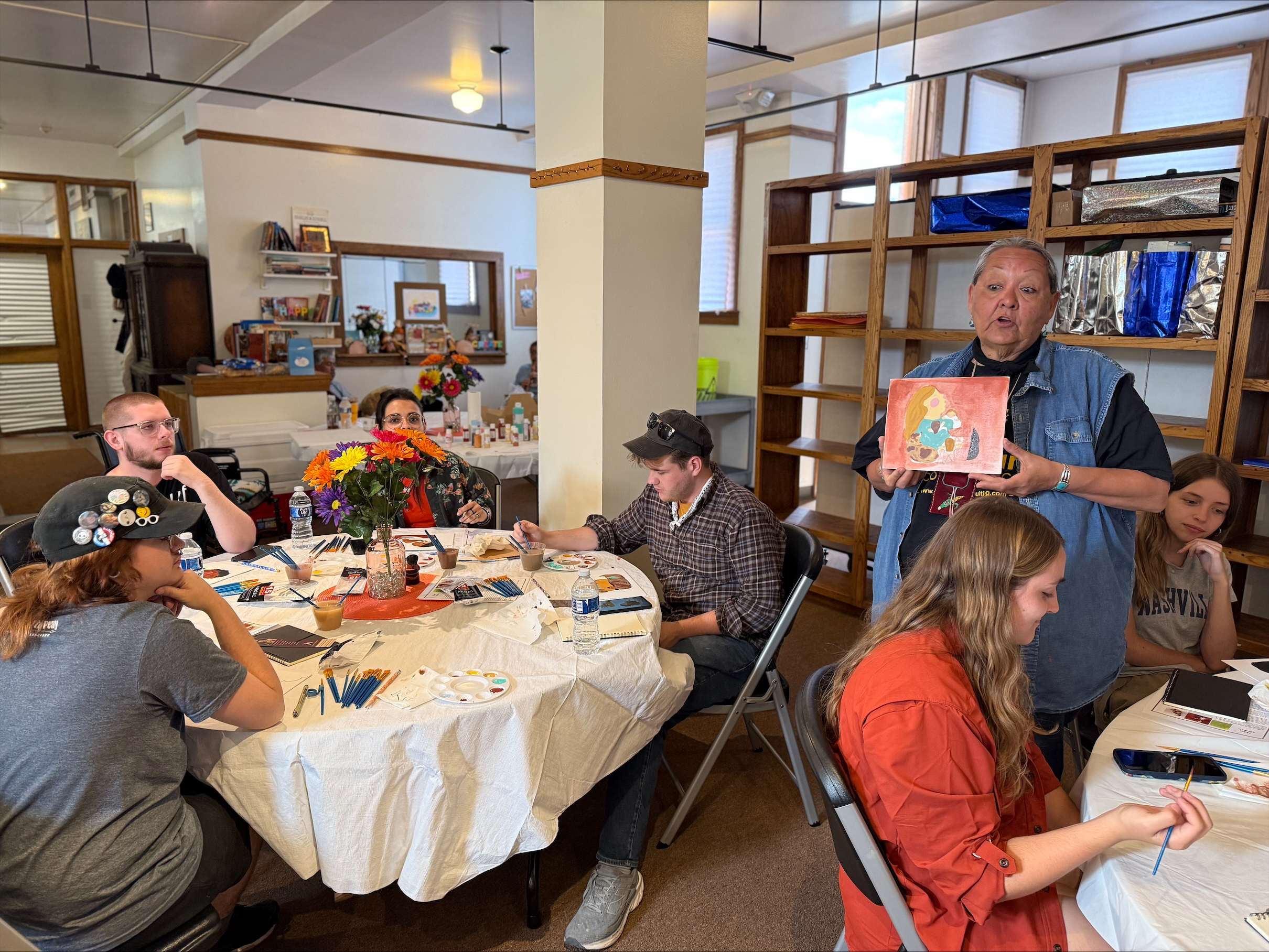
Teri L. Frazier (Laguna Pueblo) works with Austin Peay State University students on an art activity at the Gallup Cultural Center. | Contributed photo
At the Gallup Cultural Center, participants also engaged in hands-on cultural learning through an art activity led by Teri L. Frazier (Laguna Pueblo). Students created illustrations of the storytellers in their lives while listening to traditional flute and drum music performed by Zuni Pueblo holy men.
“Visual, oral, and written storytelling are interrelated parts of everyday life in Native American culture,” Atkinson said. “When you look at a pot or Navajo rug, you might not understand it as storytelling right away, but it’s about bringing in aspects of your ancestors and what’s happening in your life. It’s also about place, because you’re harvesting every single part of the material.”
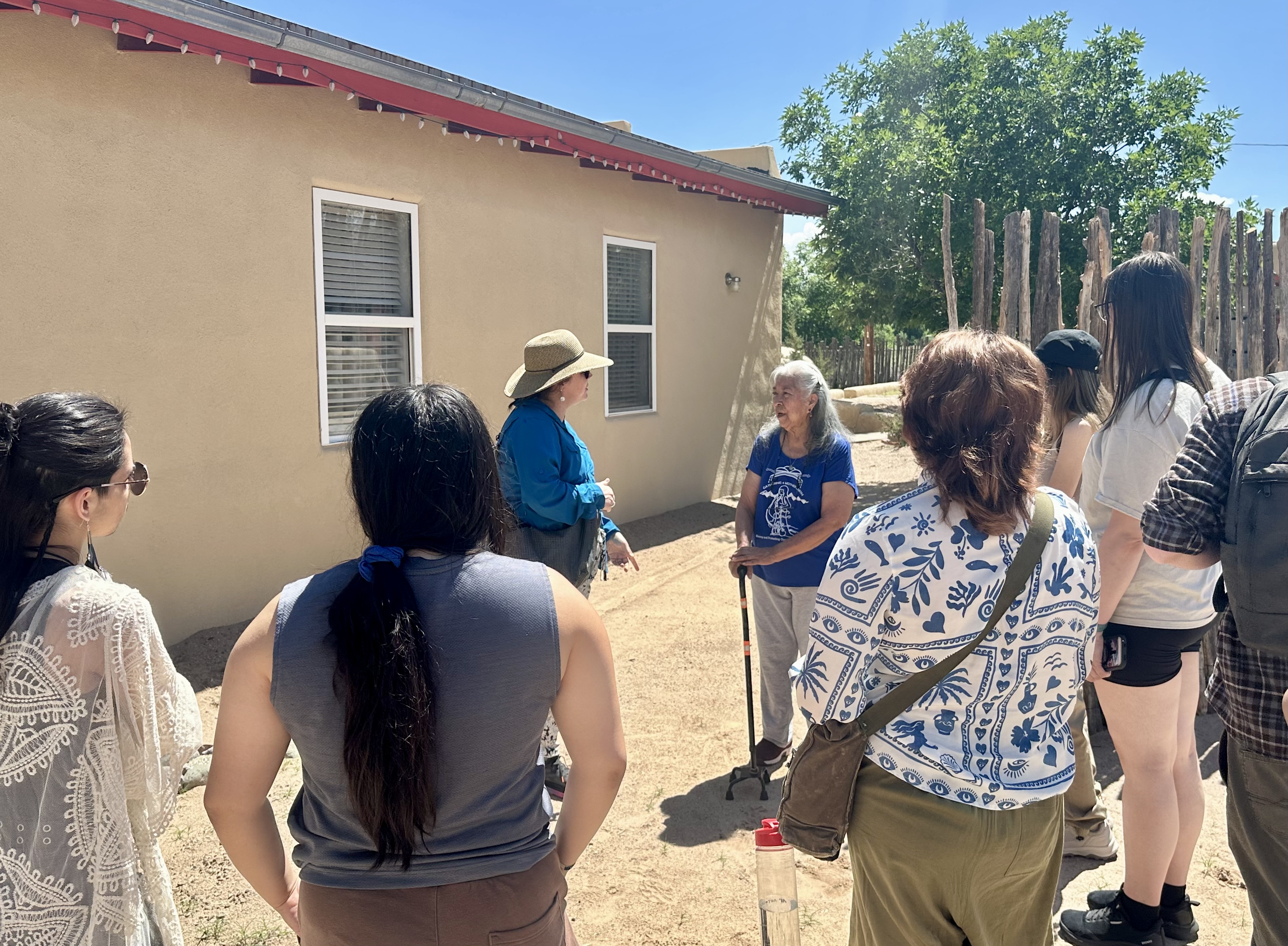
Austin Peay State University students and faculty speak with Barbara Gonzales (Tahn-Moo-Whé, Sunbeam) outside the Sunbeam Gallery, which carries on the internationally recognized pottery traditions of Gonzales’s great-grandmother, Maria Martinez. | Contributed photo
For Ross Gawarecki, the experience highlighted historical injustices, ongoing hardships, and resilience within Native communities.
“Indigenous people are practicing what it truly means to make America great through their perseverance, continued kindness, and welcoming of all who take the time to sit and listen to and with them,” Gawarecki said. “When they or any group of people are hurting, we as a nation are hurting.”
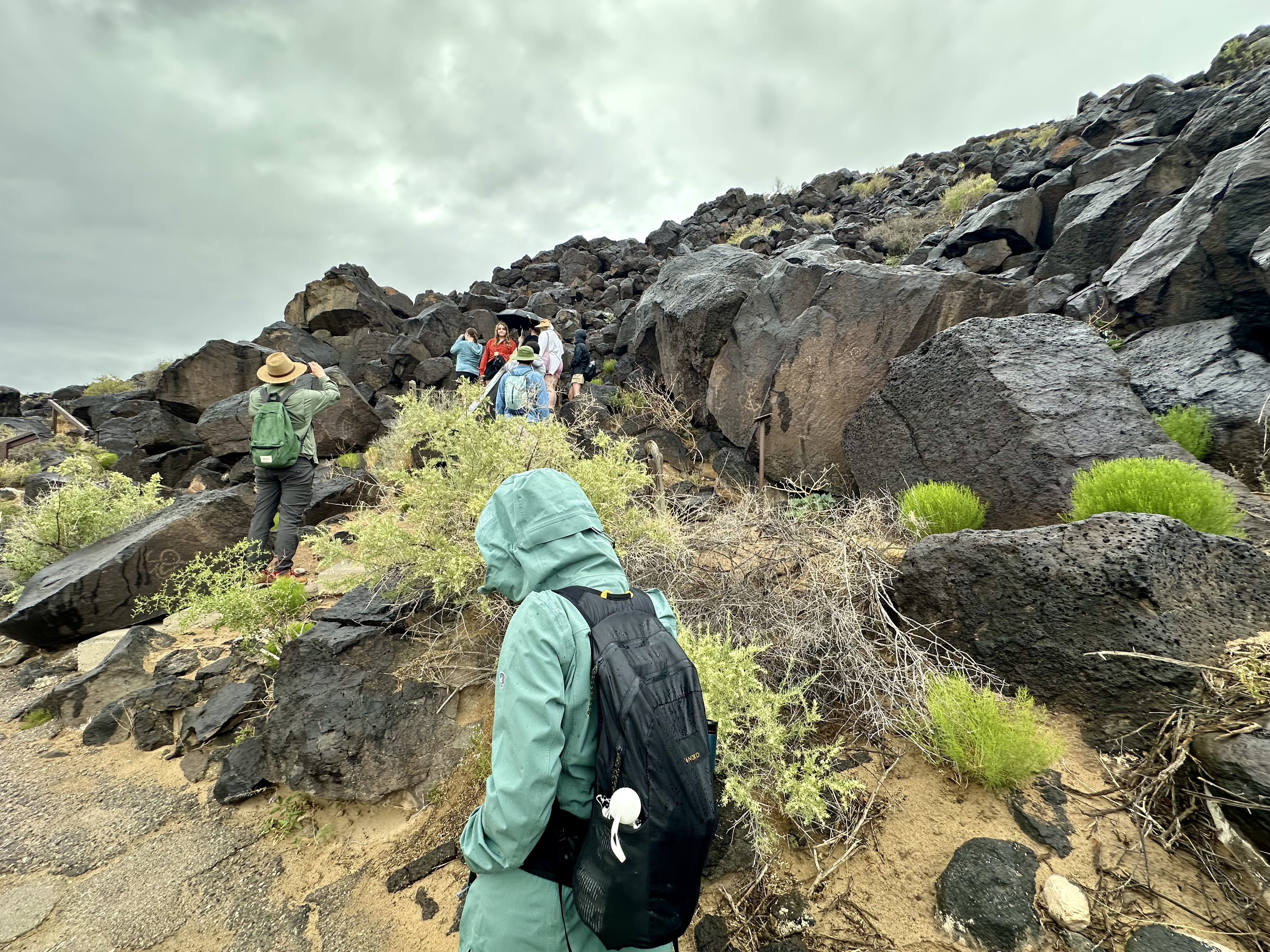
Austin Peay State University students and faculty explore Petroglyph National Monument, which protects a site where Native Americans carved spiritually significant designs and symbols into volcanic rocks hundreds of years ago. | Contributed photo
Inspired by the connections their students built during the trip, Smithers and Atkinson aim to bring more classes to New Mexico in the future.
“Every single Native person who we encountered exemplified the utmost model of true American citizenship - loyal, unselfish, and patriotic,” Smithers said. “To them, patriotism is all about caring for people and place. There was a lot of talk about history, but there wasn’t a dwelling on negative aspects - it was more about optimism and moving forward in togetherness.”
About Study Away Programs at APSU
Austin Peay State University’s Global Education Office began offering study away programs this summer to promote cultural exchange and experiential learning opportunities in the U.S.
The university’s first two study away programs in Charleston, South Carolina and New Mexico were supported by funding from APSU’s Office of Institutional Culture.
“Our study away programs are about providing opportunities for as many APSU students as possible, bringing costs down, and making it approachable for students who haven’t done a lot of travel before,” said Faculty Chair of Education Abroad Dr. Daniel Shea. “We hope it inspires them to visit other places, while at the same time providing rich and meaningful educational experiences outside of the Clarksville area.”
Students interested in upcoming travel opportunities can contact the Global Education Office at 931-221-6851 or stop by the university’s study abroad fairs during the fall and spring semesters.
